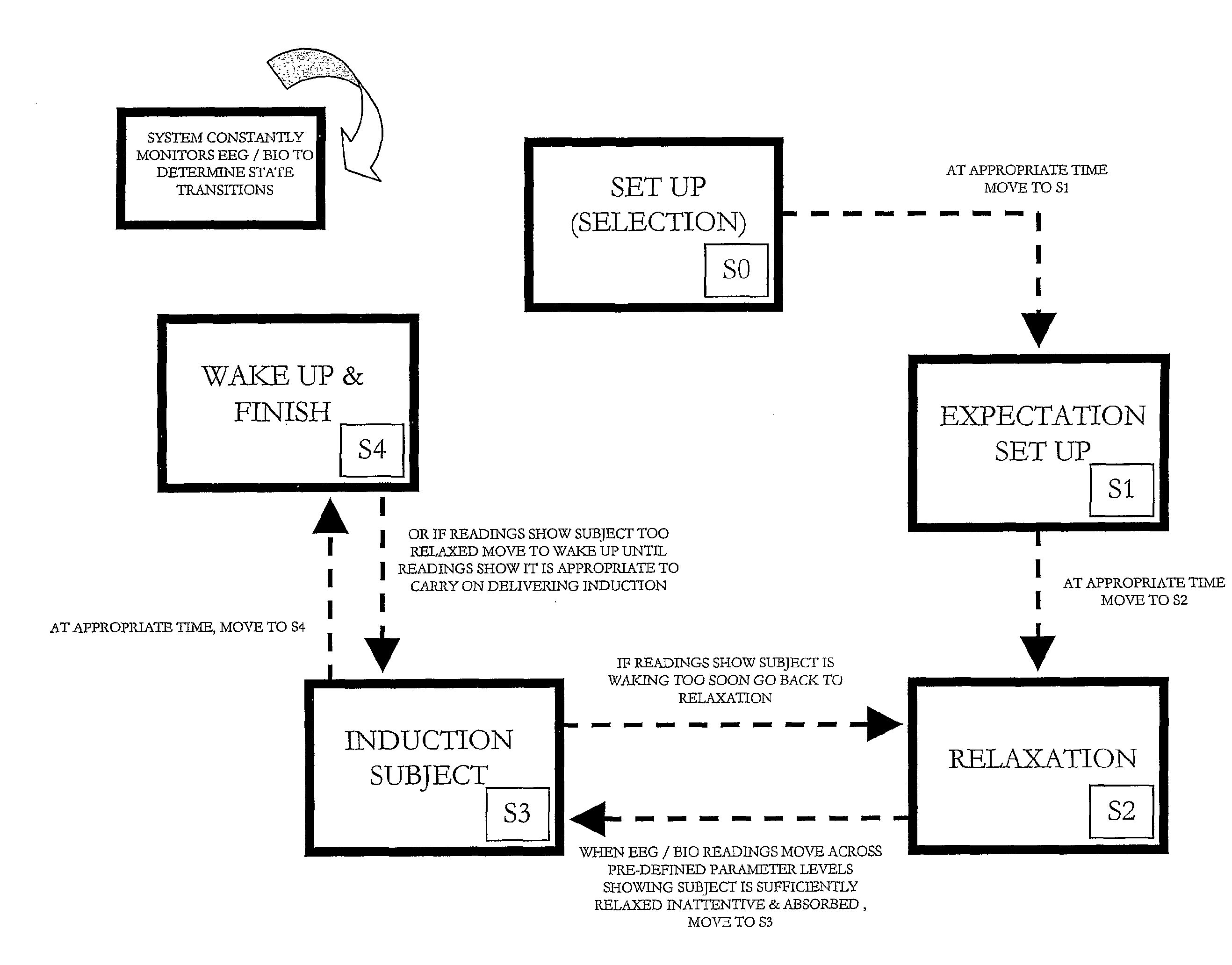Medical hypnosis device for controlling the administration of a hypnosis experience
a hypnosis experience and medical technology, applied in the direction of sleep inducing/ending devices, sleep/relaxation inducing devices, sensors, etc., can solve the problems of loose control of self, many negative connotations and pre/misconceptions, and limited acceptance and usage across a wider population. , to achieve the effect of better tailored conten
- Summary
- Abstract
- Description
- Claims
- Application Information
AI Technical Summary
Benefits of technology
Problems solved by technology
Method used
Image
Examples
Embodiment Construction
[0083]A system comprising a hypnosis device that outputs stimulus to a user and receives physiological information feedback from the brain and / or body of the user is described which embodies the present invention. The system uses the received physiological information feedback to control a user's hypnosis experience assisting a user achieving their goals more effectively.
[0084]The system incorporates machine generated learning and intelligence to automatically drive pre-recorded induction sensory related ‘clips’ in a wide range of users (health, performance enhancement, learning, personal development / issue etc), delivering each stage of the induction at the time of derived optimal effectiveness. The delivery and selection of sensory content, such as audio / visual content, is controlled using feedback data relating to a condition of the current state of the users' consciousness and the level of relaxation and makes for a far better and more accurate system of delivering hypnosis thera...
PUM
 Login to View More
Login to View More Abstract
Description
Claims
Application Information
 Login to View More
Login to View More - R&D
- Intellectual Property
- Life Sciences
- Materials
- Tech Scout
- Unparalleled Data Quality
- Higher Quality Content
- 60% Fewer Hallucinations
Browse by: Latest US Patents, China's latest patents, Technical Efficacy Thesaurus, Application Domain, Technology Topic, Popular Technical Reports.
© 2025 PatSnap. All rights reserved.Legal|Privacy policy|Modern Slavery Act Transparency Statement|Sitemap|About US| Contact US: help@patsnap.com



